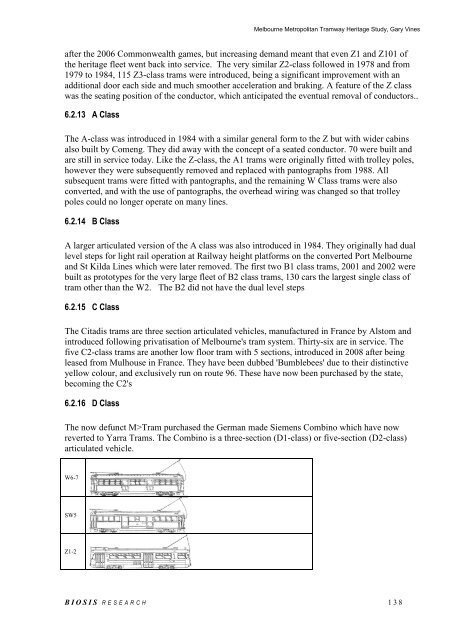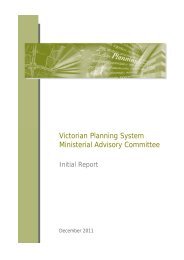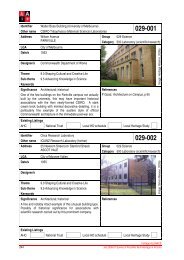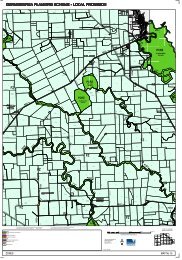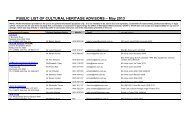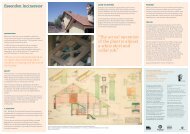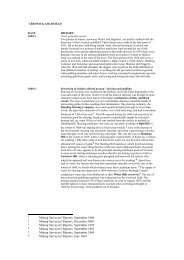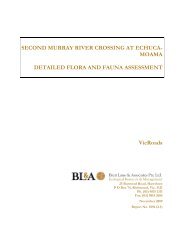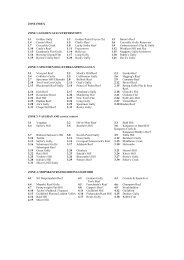Tram history - Chapter 6 - Part 1
Tram history - Chapter 6 - Part 1
Tram history - Chapter 6 - Part 1
You also want an ePaper? Increase the reach of your titles
YUMPU automatically turns print PDFs into web optimized ePapers that Google loves.
Melbourne Metropolitan <strong>Tram</strong>way Heritage Study, Gary Vines<br />
after the 2006 Commonwealth games, but increasing demand meant that even Z1 and Z101 of<br />
the heritage fleet went back into service. The very similar Z2-class followed in 1978 and from<br />
1979 to 1984, 115 Z3-class trams were introduced, being a significant improvement with an<br />
additional door each side and much smoother acceleration and braking. A feature of the Z class<br />
was the seating position of the conductor, which anticipated the eventual removal of conductors..<br />
6.2.13 A Class<br />
The A-class was introduced in 1984 with a similar general form to the Z but with wider cabins<br />
also built by Comeng. They did away with the concept of a seated conductor. 70 were built and<br />
are still in service today. Like the Z-class, the A1 trams were originally fitted with trolley poles,<br />
however they were subsequently removed and replaced with pantographs from 1988. All<br />
subsequent trams were fitted with pantographs, and the remaining W Class trams were also<br />
converted, and with the use of pantographs, the overhead wiring was changed so that trolley<br />
poles could no longer operate on many lines.<br />
6.2.14 B Class<br />
A larger articulated version of the A class was also introduced in 1984. They originally had dual<br />
level steps for light rail operation at Railway height platforms on the converted Port Melbourne<br />
and St Kilda Lines which were later removed. The first two B1 class trams, 2001 and 2002 were<br />
built as prototypes for the very large fleet of B2 class trams, 130 cars the largest single class of<br />
tram other than the W2. The B2 did not have the dual level steps<br />
6.2.15 C Class<br />
The Citadis trams are three section articulated vehicles, manufactured in France by Alstom and<br />
introduced following privatisation of Melbourne's tram system. Thirty-six are in service. The<br />
five C2-class trams are another low floor tram with 5 sections, introduced in 2008 after being<br />
leased from Mulhouse in France. They have been dubbed 'Bumblebees' due to their distinctive<br />
yellow colour, and exclusively run on route 96. These have now been purchased by the state,<br />
becoming the C2's<br />
6.2.16 D Class<br />
The now defunct M><strong>Tram</strong> purchased the German made Siemens Combino which have now<br />
reverted to Yarra <strong>Tram</strong>s. The Combino is a three-section (D1-class) or five-section (D2-class)<br />
articulated vehicle.<br />
W6-7<br />
SW5<br />
Z1-2<br />
B I O S I S R E S E A R C H 1 3 8


